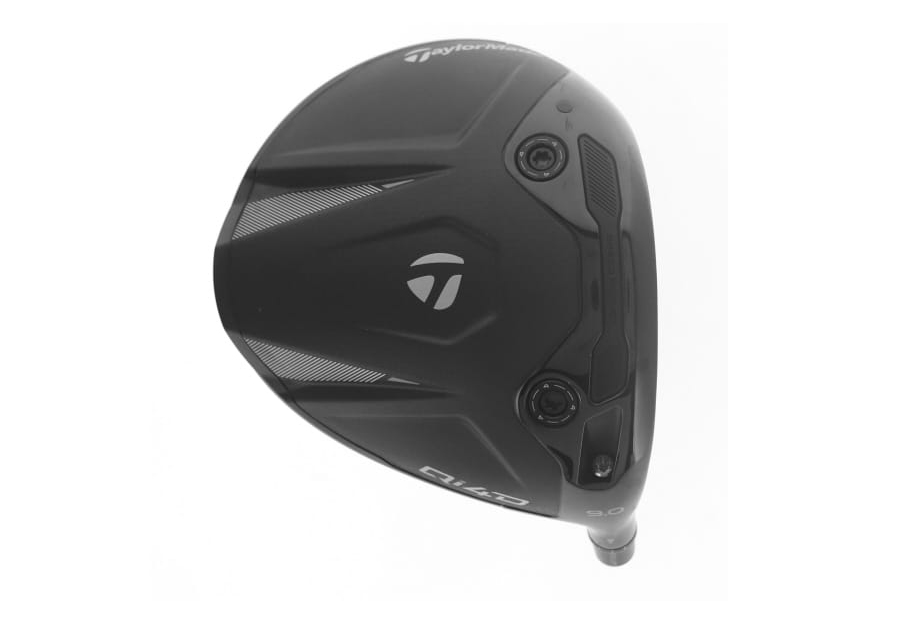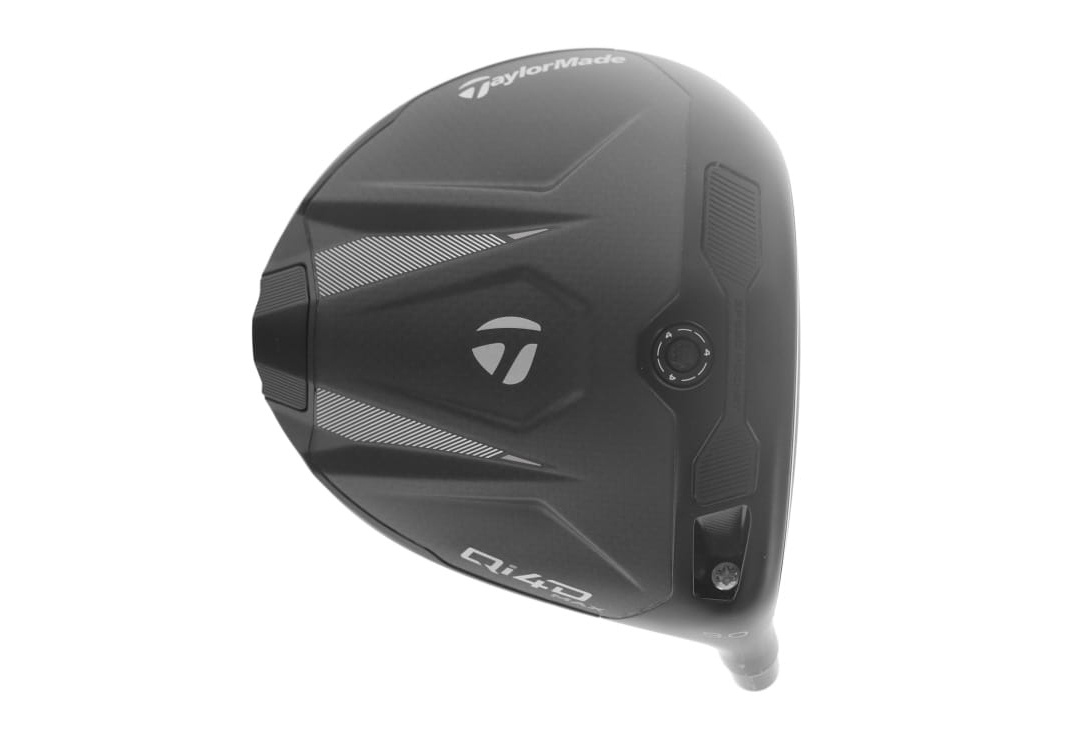Save your dodgeball jokes—we’ve been making them nearly every time Titleist mentions “3D” in their iron models—but TaylorMade is upping the ante with Qi4D drivers.
What are “4Ds”? Who knows… maybe it just means that with the 2026 driver design, TaylorMade engineers are playing four-dimensional chess.
What we do know is limited to the information found in the USGA photos and descriptions—that is to say, not much.
Aesthetics
Given the fact that the USGA only publishes black and white photos and only shows the sole, there’s not a whole lot we can say about the industrial design aspects of the new models.
In my opinion (for whatever that’s worth), TaylorMade made it a bit more subtle with the Chromium Carbon design of this year’s Qi35.
The photos suggest TaylorMade has backed off a bit with the Qi4D series. There’s only a slightly visible carbon weave on the sole, and the subtle design cues (green accents) that hinted at relative CG locations appear to be gone as well.
Drivers need to look different from one year to the next, and while I’m sure these will look good in living color, I do wonder if TaylorMade dialed it back a little too much.
Three models
The USGA (and R&A) list includes three models. Nothing surprising here, as TaylorMade is continuing on with the familiar lineup. Continuing on are the Qi4D LS, Qi4D (which TaylorMade refers to as the “Core” model), and the Qi4D Max.
Missing—at least for now—is a Qi4D Lite model. That, of course, assumes TaylorMade is planning a one-for-one upgrade across the entire lineup. It’s speculative, but I’d point out that lightweight models (not used on Tour) often don’t hit the conforming list until just before launch.
TaylorMade Qi4D LS
The first notable change with the Qi4D lineup is that TaylorMade has swapped the LS’s three-weight system for a simplified front-to-back, two-weight system.
Whether that’s to keep flight perfectly neutral or there’s some baked-in internal bias remains to be seen. Regardless, TaylorMade’s story will likely include some bits about maintaining fitting options while reducing complexity.
TaylorMade Qi4D (Core)

What TaylorMade took away from the LS, they put into the Core model (kind of). While it’s easy to overlook in the pictures (I suppose there are hints if you stare long enough), TaylorMade’s core model will leverage a four-weight system that adds an R7 Quad-style weight ports to the front and rear of the Qi4D.
On one hand, I’d argue that placing two weights that close together (as they are in the rear) will likely have minimal impact on ball flight. On the other hand, I’d tell you that I swapped weights around on my R7 Quad Mini Driver, and regardless of what physics might say, it flies exactly how I want it to—and that’s really all that matters.
At a minimum, it should give fitters all the necessary levers to dial in trajectory in TaylorMade’s driver for the masses (2026 edition).
Qi4D Max

The Qi4D Max is interesting for what’s missing in the USGA’s descriptions of the markings. There is no explicit callout of 10,000 MOI, or 10K, or anything else to suggest that the Qi4D Max achieves the pinnacle of forgiveness.
That’s not to say it doesn’t, but given the industry’s compulsion to denote every bit of minutia it can possibly fit on a clubhead, the lack of an MOI callout is almost conspicuous in its absence.
Has TaylorMade dialed back forgiveness? Have we already been conditioned to think that “Max” equals 10K, and so some manufacturers don’t think it needs to be mentioned anymore?
I guess we’ll find out.
The USGA description suggests that the Qi4D Max will feature a two-weight system not unlike the one found on the LS model.
Carbon face continues
To say that TaylorMade’s Carbon Face is polarizing is an understatement. Actually, I’m not sure that’s a reasonable assessment. While I don’t recall anyone ever telling me they love it, numerous readers have pointed to it as the reason why they won’t consider purchasing a TaylorMade driver.
Be that as it may, the USGA’s descriptions suggest TaylorMade is sticking with the technology for another cycle. In fairness, the company has systematically improved its bonding quality, so issues with detached faces are mostly in the rearview mirror.
That said, it’s hard to point to any quantifiable performance benefit beyond the weight savings and the MOI boost that can come from it. Still, everyone who wants one has a 10K driver on the market, so you clearly don’t need carbon faces to get there.
I’d also argue that TaylorMade’s pursuit of MOI has cost them some performance in other areas.
That’s all a roundabout way of saying that I’m hard-pressed to argue that the pursuit of carbon has led to any meaningful performance advantage.
How much will TaylorMade Qi4D drivers cost?
While pricing information has not been shared, I think you can probably expect a price hike on pretty much everything that comes out in 2026. Other than a one-off increase here or there, prices held steady throughout 2025, and that meant that pretty much everyone ate the added costs of tariffs.
It’s unconfirmed, but I was told that one large brand swallowed $50 million in added costs. With most of the industry being comprised of publicly-traded companies, that’s not going to happen again this year.
Prices are going to go up. It’s only a matter of by how much.
We’re probably not going to see $700, but that’s also probably going to be the result of some very fine hair-splitting in the difference without a distinction between $699.99 and $700 on the nose.
Best guess… $649 for Core, Max, and eventually Lite. $699.99 for LS. But again, that’s just a guess, so please don’t take it as gospel.
Have your say
We’ll have more info soon. Until then, what do you think of what you see here? Are you excited about the TaylorMade Qi4D lineup?
The post TaylorMade Qi4D Drivers: Subtle Tweaks or Signficant Overhaul? appeared first on MyGolfSpy.























